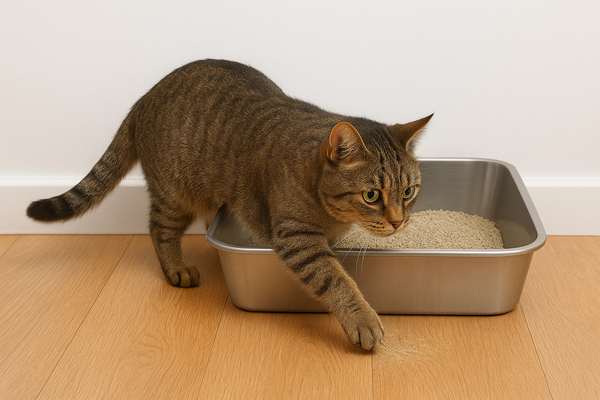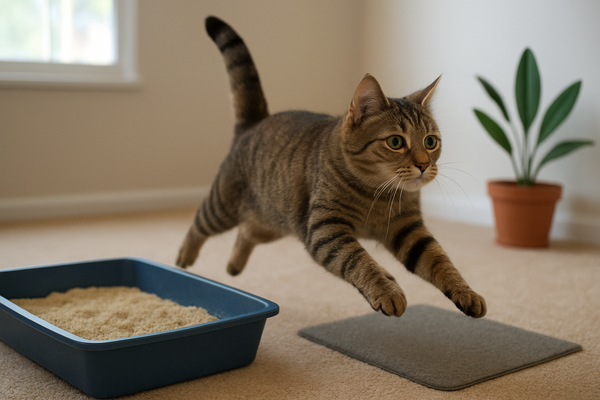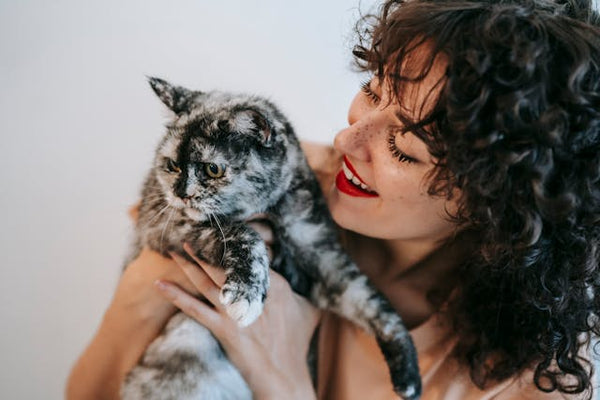
Cats have captivated us for millennia. From their sleek grace to their enigmatic personalities, there's something undeniably fascinating about cats. One of their most striking features is their gaze – those piercing eyes that seem to hold secrets and sometimes appear to never blink. But is this just a perception, or do cats truly defy the natural reflex to blink?
The truth, as with most things in the cat world, is a bit more nuanced. While cats do blink, they do it far less frequently than humans. This difference stems from fascinating adaptations related to their evolutionary roles as both predator and prey. Let's delve deeper into the science behind the cat stare and explore the reasons why they seem to defy the blink reflex.
Beyond Basic Blinking: The Role of Tears and the Third Eyelid
When humans blink, it's not just a brief respite from the world. Blinking serves several crucial functions. Our eyelids spread tears across the cornea, lubricating the eye's surface and preventing it from drying out. Blinking also helps remove dust, debris, and irritants that could potentially damage the eye.
Cats, however, have a different way of achieving these goals. While they do have tear ducts just like us, their tears function differently. Unlike humans, who produce a continuous flow of tears, cats produce tears only when necessary. This means their tears don't need to be spread across the eye regularly.
Furthermore, cats possess a third eyelid, also known as the nictitating membrane. This transparent or pink membrane resides at the inner corner of the eye and sweeps across the eyeball in a blink-like motion. This third eyelid efficiently removes dust and debris, allowing cats to maintain clean and lubricated eyes without completely closing their eyelids.
The Evolutionary Advantage of a Reduced Blink Rate
The reduced blink rate in cats is believed to be an evolutionary adaptation honed through natural selection. As both predators and prey, cats need to be constantly vigilant. Blinking, even for a fraction of a second, could mean missing a crucial opportunity to pounce or avoid a predator's attack. By minimizing blinks, cats can maintain a clear view of their surroundings at all times.
This advantage is particularly significant during hunting. Cats rely on stealth and focus to successfully capture prey. A blink, however brief, could disrupt their focus and potentially alert their intended meal. Additionally, when threatened, a cat's unflinching gaze can be a form of intimidation, deterring potential attackers.
Decoding the Cat Stare: When a Blink Isn't Just a Blink
While the reduced blink rate serves a practical purpose, understanding a cat's stare goes beyond biology. In the world of cat communication, a slow blink holds immense significance. It's often referred to as a "slow blink" or a "cat kiss" and is considered a sign of affection and trust.
When your cat returns your slow blink, it's essentially saying, "I feel safe and relaxed with you." This gesture can strengthen the bond between you and your feline companion and is a sign of contentment and affection. So, the next time your cat seems to be staring you down, consider it a compliment!
Beyond the Stereotype: When Blinking Can Be a Sign of Trouble
Despite their reduced blink rate, cats do blink, and the frequency can provide valuable insights into their physical and emotional state. Excessive blinking, rapid blinking, or squinting can be signs of eye irritation, dry eyes, or even underlying health conditions. If you notice your cat blinking more frequently than usual, schedule a visit to the veterinarian to rule out any medical problems.
Blinking with a narrowed gaze can also be a sign of aggression or fear. Pay attention to other body language cues like flattened ears, a hissing sound, or a tucked tail to understand if your cat feels threatened and needs some space.
Building a Blinking Bond: Understanding Your Cat's Communication
Understanding cat communication is key to building a strong and fulfilling relationship with your feline friend. Learning the language behind the blink can unlock a deeper understanding of your cat's feelings and needs.
Here are some tips to help you decipher your cat's blinks:
- The Slow Blink: As mentioned earlier, a slow, deliberate blink is a sign of affection and trust. It's a way for your cat to communicate that they feel comfortable and relaxed in your presence.
- The Rapid Blink: Rapid blinking can indicate irritation, discomfort, or even fear. This can be caused by environmental factors like bright lights or loud noises, or a stressful situation.
- Squinting: Squinting can be a sign of irritation, but it can also be a sign of playfulness. If your cat is squinting while moving their head in a playful way, it's likely an invitation to interact.
- The Blinking Stare: This one can be a bit trickier. A direct stare combined with slow blinking can be a sign of affection and trust, but if your cat is staring intently with wide eyes and no blinking, it could indicate a more aggressive stance. Look for other body language cues like flattened ears and a swishing tail to confirm if your cat feels threatened.
In addition to blinking, consider other nonverbal cues like body language, vocalizations, and ear position to get a complete picture of your cat's mood. Here are some additional tips for building a strong blinking bond with your feline friend:
- Initiate the Slow Blink: Try slow blinking at your cat first. If they return the gesture with a relaxed body posture and a slow blink in return, it's a sign that they feel comfortable and trusting towards you.
- Respect Your Cat's Boundaries: Not all cats are comfortable with direct eye contact. If your cat seems to avert their gaze or blink rapidly when you look at them, respect their space and approach them in a gentle and non-threatening way.
- Create a Calm Environment: A calm and predictable environment can reduce stress and encourage a more relaxed and trusting demeanor in your cat. This makes it more likely that they will feel comfortable enough to engage in friendly blinking behavior.
- Positive Reinforcement: Pair positive experiences like petting or playtime with relaxed blinking sessions. This reinforces the association of slow blinking with positive interactions, creating a deeper bond between you and your cat.
By understanding the nuances of feline blinking and paying attention to other communication cues, you can embark on a journey of deeper understanding with your furry friend. The slow blink may seem like a simple act, but it represents a powerful language of trust, affection, and communication within the fascinating world of cats.
Beyond the Blink: Exploring Other Feline Communication Cues
Blinking is just one piece of the puzzle when it comes to understanding your cat. Here are some other key communication cues to keep an eye on:
- Body Language: A cat's posture speaks volumes. A relaxed cat will have a soft, rounded body, a tail held high, and ears perked up. Conversely, a cat who feels threatened will flatten their ears, hunch their back, and swish their tail.
- Vocalizations: Cats have a wide range of vocalizations, from meows and purrs to chirps and growls. Understanding the context can help decipher their message. A soft purr signifies contentment, while a hissing sound indicates fear or aggression.
- Ear Position: A cat's ears are highly mobile and reveal a lot about their emotional state. Relaxed ears point straight up, while flattened ears indicate fear or aggression.
By paying attention to these subtle cues in conjunction with blinking patterns, you'll be well on your way to becoming a fluent speaker of cat.
The Final Gaze: Unveiling the Secrets of the Cat Stare
The cat stare, once a source of mystery, can now be seen as a window into the fascinating world of feline communication. By understanding the science behind their reduced blink rate and the deeper meaning behind a slow blink, we can build stronger, more meaningful relationships with our feline companions. So next time your cat locks eyes with you, remember, it's not just a stare – it's a conversation waiting to happen.



